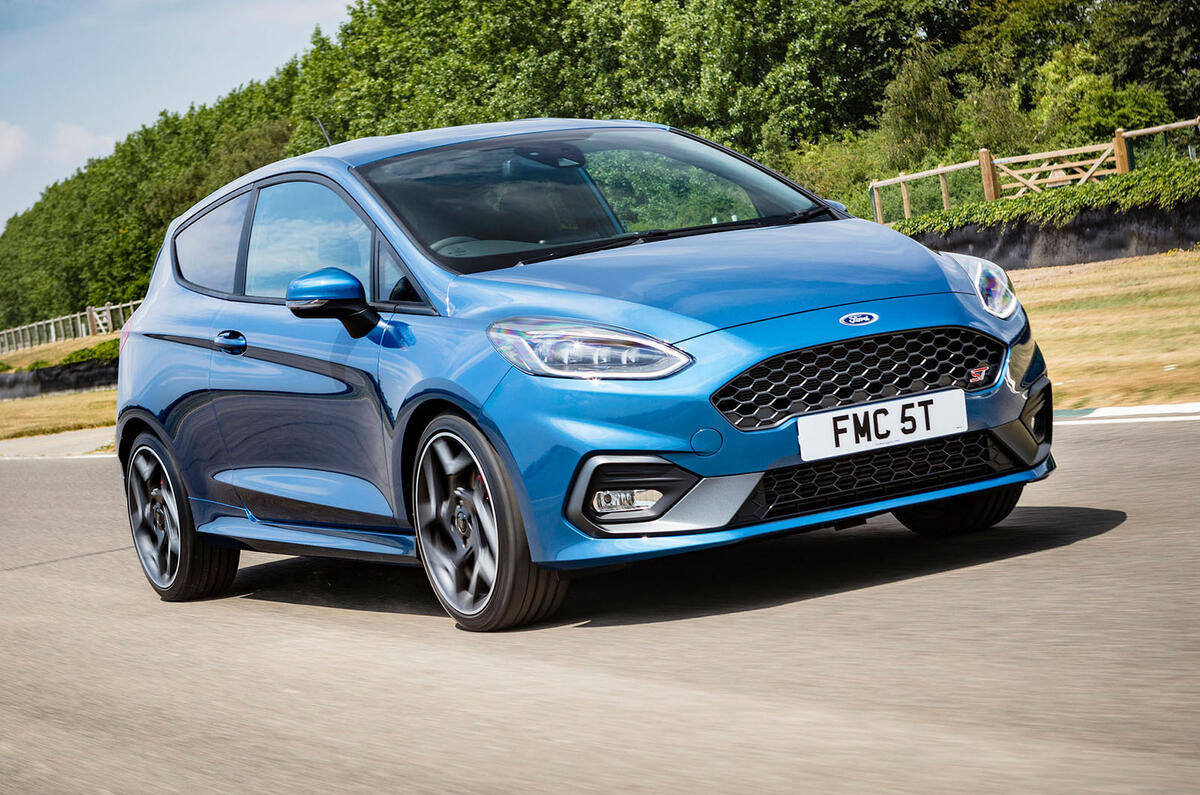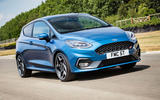What is it?
If you’ve read road test editor Matt Saunders’ report from Ford’s Lommel proving ground, you’ll already understand the surprising scale of changes made to the new Fiesta ST.
If you haven’t, and now that we have the car with us in the UK, here’s a technical once-over of the most eagerly awaited driver’s car of 2018 for those on a real-world budget.
Let’s start in the engine bay. The 197bhp 1.6-litre four-pot from the ST200 run-out special of the previous generation is replaced by an aluminium 1.5-litre unit whose three cylinders develop precisely the same power at precisely the same point in the rev range: 6000rpm. But for a solitary pound-foot, torque is also identical at 214lb ft, although it arrives substantially earlier at just 1600rpm and remains until 4000rpm.
The new car duly shaves 0.2sec off the ST200’s 6.7sec 0-62mph time. By supermini standards, that’s suitably hot. It’s just 0.1sec behind the lighter, more powerful, more compromised and vastly more expensive Toyota Yaris GRMN, in fact. Wrung out to the redline in sixth gear, the Fiesta ST is claimed to hit 144mph.
All of a sudden, this car's vital statistics are in the same sphere as the Focus RS of 2002, although now, as then, it’s the chassis that holds more interest, not least because this is the first time the Fiesta ST has even been offered with a torque-biasing differential. Just like for the original Focus, it’s a mechanical job from British firm Quaife and it works alongside a torque-vectoring program that brakes the inside front wheel during cornering.
Ford hasn’t neglected the ST’s trailing axle, though. In fact, it’s on this torsion-beam set-up that the engineers have lavished most attention, fitting directionally wound springs — they’re curved, in effect — that are said to be highly resistant to the corrupting effect of cornering loads. There are also mono-tube dampers from Tenneco (twin-tube at the front), double-valved to more naturally absorb both high and low-frequency inputs. More on all this in a moment.
More than seven in 10 owners are expected to go for range-topping ST-3 trim. Do so and the standard 17in wheels are exchanged for a set of 18in ones. Either way, Ford has chosen to fit the car with Michelin Pilot Super Sport tyres — superb rubber in our experience, if no longer so widely available, and enlisted because the new Pilot Sport 4 didn’t grip enough during testing.
































Join the debate
Add your comment
.
Looks good, a 3cyl engine is a little dissapointing i always think they sound a bit breathless and wheezy, but still it's nice otherwise.
And yes
Can we have editing please.
Ride quality
Fun to drive, but from what I've read elsewhere the ST's ride is very firm, even for a hot supermini. This is played down in this review!